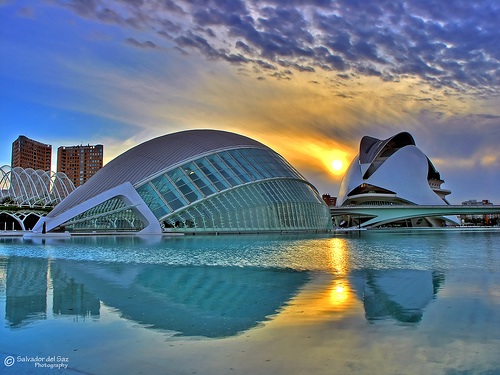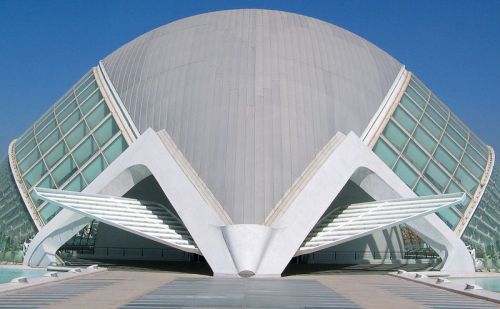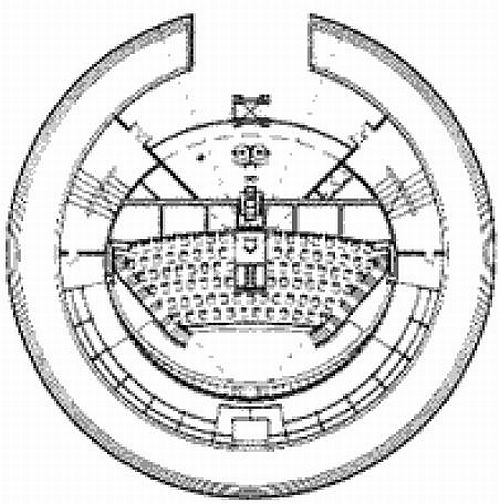The City of Valencia in Spain is a beautiful place. It is the city of Art, Culture, Architecture and Sciences. This ancient city still preserves the cultural heritage in its old streets and alleys. Yet, the city has embraced modernity, as is found in the city’s breath-taking architecture.
In this new city, a building complex was envisioned which would put Valencia back on the world map. This new project, was The City of Arts and Science. The construction of the City of Art and Science began in 1991, and was completed by 2004. It consists of a Science Museum, Planetarium, an Opera House and Promenade. It was designed by the famous Architect Santiago Calatrava.
Valencia is the capital of the Spanish autonomous community of Valencia and its province. It is the third largest city in Spain and the 21st largest in the European Union. It forms part of an industrial area on the Costa del Azahar.
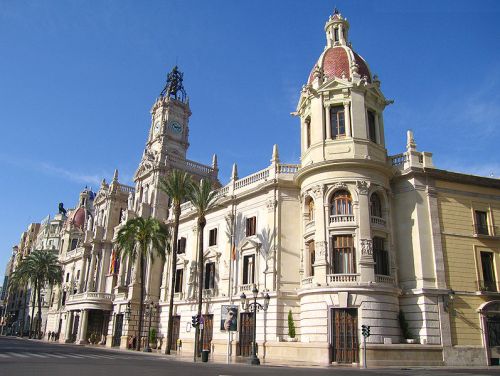
Ajuntament València
The estimated population of the city of Valencia proper was 797,654 as of 2007 official statistics. Population of the metropolitan area[citation needed] As of 2007, the mayor of Valencia is Rita Barberá Nolla. (urban area plus satellite towns) was 1,738,690 as of 2007.
The ancient winding streets of the Barrio del Carmen contain buildings dating to Roman and Arabic times. The Cathedral, built between the 13th and 15th century, is primarily of Gothic style but contains elements of Baroque and Romanesque architecture. Beside the Cathedral is the Gothic Basilica of the Virgin (Basílica De La Virgen De Los Desamparados). The 15th century Serrano and Quart towers are part of what was once the wall surrounding the city.
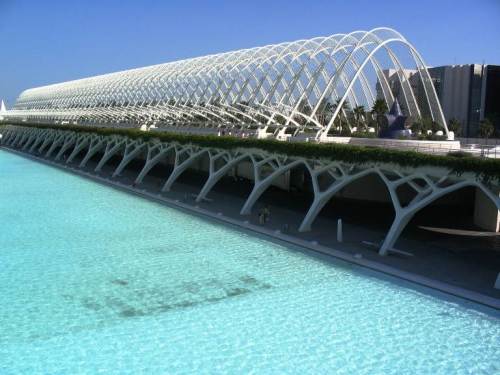
L Umbracle Garden
UNESCO has recognised the Late Gothic silk exchange (La Lonja de la Seda) as a World Heritage Site. The modernist Central Market (Mercado Central) is one of the largest in Europe. The main railway station Estación Del Norte is built in art deco style.
World-renowned (and city-born) architect Santiago Calatrava produced the futuristic City of Arts and Sciences (Ciutat de les Arts i les Ciències), which contains an opera house/performing arts centre, a science museum, an IMAX cinema/planetarium, an oceanographic park and other structures such as a long covered walkway and restaurants. Calatrava is also responsible for the bridge named after him in the center of the city. The Music Palace (Palau De La Música) is another good example of modern architecture in Valencia.
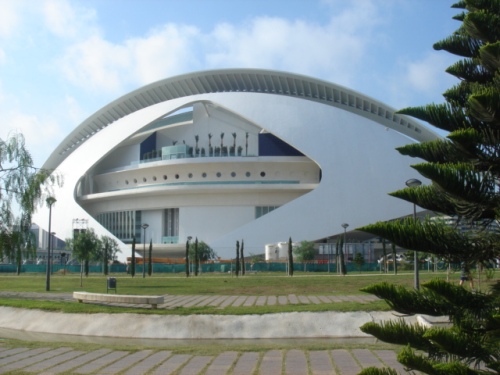
The Arts Palace
The cathedral was called in the early days of the Reconquista Iglesia Mayor, then Seo (from Latin sedes, i.e. (archiepiscopal) see), and in virtue of the papal concession of 16 October, 1866, it is called the Basilica metropolitana. It is situated in the centre of the ancient Roman city where some believe the temple of Diana stood. In Gothic times, it seems to have been dedicated to the most Holy Saviour; the Cid dedicated it to the Blessed Virgin; King Jaime the Conqueror did likewise, leaving in the main chapel the image of the Blessed Virgin which he carried with him and which is believed to be the one which is now preserved in the sacristy. The Moorish mosque, which had been converted into a Christian church by the conqueror, appeared unworthy of the title of the cathedral of Valencia, and in 1262 Bishop Andrés de Albalat laid the cornerstone of the new Gothic building, with three naves; these reach only to the choir of the present building. Bishop Vidal de Blanes built the magnificent chapter hall, and Jaime de Aragón added the tower, called “Miguelete” because it was blessed on St. Michael’s day in 1418, which is about 166 feet (51 m) high and finished at the top with a belfry.
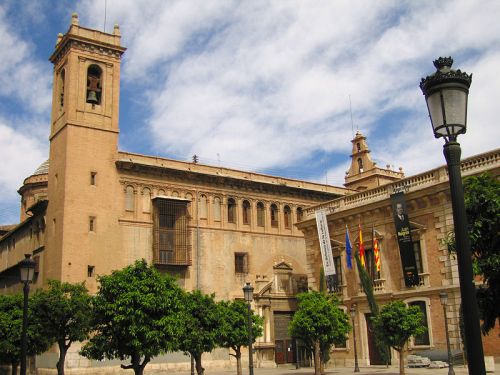
Patriarca façana
In the fifteenth century the dome was added and the naves extended back of the choir, uniting the building to the tower and forming a main entrance. Archbishop Luis Alfonso de los Cameros began the building of the main chapel in 1674; the walls were decorated with marbles and bronzes in the over-ornate style of that decadent period. At the beginning of the eighteenth century the German Conrad Rudolphus built the façade of the main entrance. The other two doors lead into the transept; one, that of the Apostles in pure pointed Gothic, dates from the fourteenth century, the other is that of the Paláu. The additions made to the back of the cathedral detract from its height. The eighteenth century-restoration rounded the pointed arches, covered the Gothic columns with Corinthian pillars, and redecorated the walls. The dome has no lantern, its plain ceiling being pierced by two large side windows. There are four chapels on either side, besides that at the end and those that open into the choir, the transept, and the presbyterium. It contains many paintings by eminent artists. A magnificent silver reredos, which was behind the altar, was carried away in the war of 1808, and converted into coin to meet the expenses of the campaign. Behind the Chapel of the Blessed Sacrament is a beautiful little Renaissance chapel built by Calixtus III. Beside the cathedral is the chapel dedicated to the “Virgen de los desamparados”.
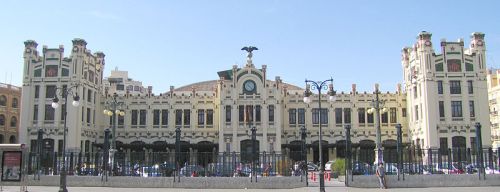
Station
In 1409, a hospital was founded and placed under the patronage of Santa María de los Inocentes; to this was attached a confraternity devoted to recovering the bodies of the unfriended dead in the city and within a radius of three miles (5 km) around it. At the end of the fifteenth century this confraternity separated from the hospital, and continued its work under the name of “Cofradia para el ámparo de los desamparados”. King Philip IV of Spain and the Duke of Arcos suggested the building of the new chapel, and in 1647 the Viceroy, Conde de Orpesa, who had been preserved from the bubonic plague, insisted on carrying out their project. The Blessed Virgin was proclaimed patroness of the city under the title of “Virgen de los desamparados” ‘Virgin of the abandonees’, and Archbishop Pedro de Urbina, on 31 June, 1652, laid the corner-stone of the new chapel of this name. The archiepiscopal palace, a grain market in the time of the Moors, is simple in design, with an inside cloister and a handsome chapel. In 1357 the arch which connects it with the cathedral was built. In the council chamber are preserved the portraits of all the prelates of Valencia.
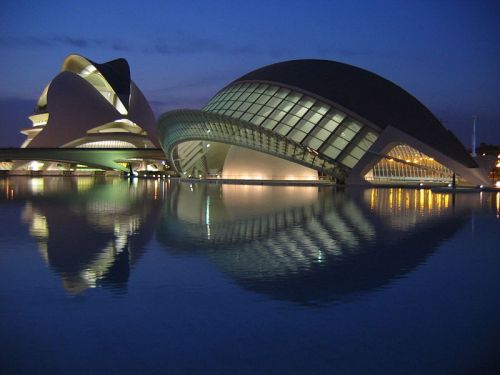
Valencia at Night
Among the parish churches those deserving special mention are: Saints John (Baptist and Evangelist), rebuilt in 1368, whose dome, decorated by Palonino, contains some of the best frescoes of Spain; El Templo ‘the Temple’, the ancient church of the Knights Templar, which passed into the hands of the Order of Montesa and which was rebuilt in the reigns of Ferdinand VI and Charles III; the former convent of the Dominicans, at present the headquarters of the “capital general”, the cloister of which has a beautiful Gothic wing and the chapter room, large columns imitating palm trees; the Colegio del Corpus Christi, which is devoted to the exclusive worship of the Blessed Sacrament, and in which perpetual adoration is carried on; the Jesuit college, which was destroyed (1868) by the revolutionary Committee, but rebuilt on the same site; the Colegio de San Juan (also of the Society), the former college of the nobles, now a provincial institute for secondary instruction.
(For more interesting projects, check out Architecture Student Chronicles and Civil Engineering Projects Online)

